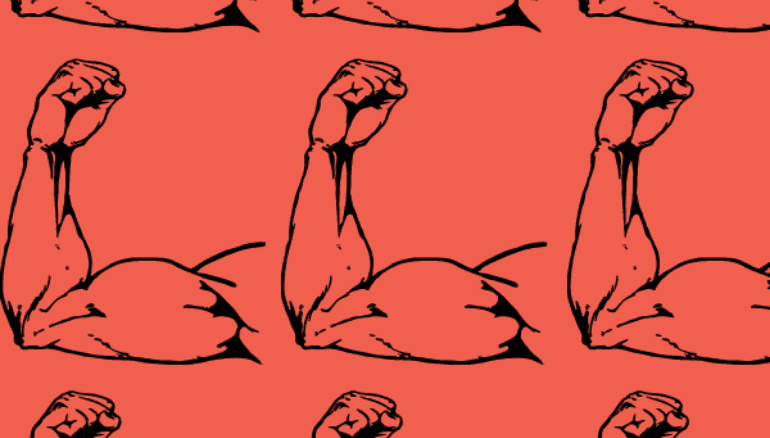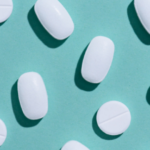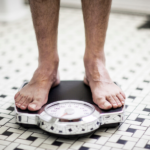“Signs you have low testosterone”, “how to increase testosterone”, “the top 10 testosterone-boosting foods”, “feeling tired? It could low T” — do these statements look familiar?
Men are bombarded with advertisements and articles about testosterone’s benefits and how to boost their levels, and it’s long been pushed as a cure-all for a range of men’s health issues including everything from sex drive to strength. However, Prof Robert McLachlan AM, andrologist and Medical Director of Healthy Male, says health literacy around the hormone is extremely poor and men are being sold a simplistic solution to a complex issue.
“People just think about it as, ‘if my libido is down, it’s got to be low T’, ‘if my erections aren’t good, it’s got to be low T’, ‘if I’m not feeling energetic or vigorous like I used to when I was 29, it’s low T’,” Prof McLachlan says.
“It’s such a persuasive notion in society. It’s so easily adopted by some commercial clinics and by some practitioners who don’t really think it all the way through. And there’s an echo chamber of protagonists backed by drug company literature and blog sites and Dr Google misinformation. It’s not hard to see why Joe Average, is readily persuaded that this is the universal solution to ‘all that ails you’.”
If you’re concerned about low testosterone or androgen deficiency, here’s what you need to know about your hormonal health and when to seek help.
What is testosterone and where does it come from?
Testosterone is the main androgen (a type of hormone) in men. It drives the physical changes that happen during male puberty, and it regulates sperm production, bone health, muscle mass and sex drive. It’s important for normal development and overall wellbeing, but it doesn’t work alone.
The hypothalamic-pituitary-gonadal axis controls testosterone production in your body. The brain sends hormonal messengers through the blood to your testes (or testicles) to trigger testosterone production. Testosterone is released into the bloodstream to act on tissues and cells throughout the body. The testes also send hormonal signals back to your brain to keep the system operating well.
What is low testosterone or androgen deficiency?
Androgen deficiency happens when either the hormones that tell your testicles to make testosterone or your testes’ ability to make testosterone are not working properly. The latter is more common. Androgen deficiency can be caused by genetic disorders, medical problems, damage to the testes or pituitary gland, cancer treatment, some types of infection or other diseases.
Symptoms of low testosterone include low energy levels, mood swings, irritability, poor concentration, reduced muscle strength and low sex drive.
After a proven diagnosis of damage to the hypothalamic-pituitary-gonadal axis by a medical professional, androgen deficiency is treated with testosterone replacement therapy to return the testosterone in the blood to a normal level.
What is a normal level of testosterone?
The level of testosterone in your blood changes throughout the day (it’s highest early in the morning) and throughout your life. Testosterone levels in men peak during adolescence and early adulthood. As men age there may be a small, gradual drop in testosterone, but this is often due to the effects of other conditions such as obesity or diabetes1. Being overweight and carrying weight around your waist is linked to lower testosterone levels2, and weight loss can help increase testosterone. Healthy older men with normal body weight usually do not experience a significant drop in testosterone levels in their blood, and there is no such thing as ‘male menopause’ or ‘andropause’.
A reference range is used as a guide by testing laboratories and doctors to decide whether a person’s hormone levels are normal or low, and whether treatment may be needed. A blood test can assess testosterone, luteinising hormone, follicle-stimulating hormone and prolactin.
The ‘normal’ testosterone reference range for healthy, young adult men extends across a wide range and may vary from 8 up to 30 nM. Most healthy people (95%) have hormone levels that fall within a standard reference range for their sex. However, a few healthy people (5%) have levels below the range. Due to this wide variability it needs to be understood that for some normal men, a morning level of 8 nM is their ideal level and does not mean they have androgen deficiency. This is why the diagnosis of androgen deficiency is not based on a simple blood test but includes a number of assessments, including a full medical history, physical examination and other tests.
Higher testosterone isn’t necessarily healthier.
“One healthy man can have a level of eight and be completely and utterly healthy or another man may sit with a level of 28 and be equally unhealthy — those numbers are right for that man. It’s not like the guy who’s on 28nM is on too much or the guy that’s on a level of eight is on too little, because that’s where his body is set to.”
– Prof McLachlan
You can think of it like height — perfectly healthy men can be 165cm or 205 cm, it’s just where you sit on the reference range.
Artificially high testosterone levels through inappropriate use of testosterone (commonly referred to as androgen abuse) can cause a variety of health problems, including cardiovascular disease, infertility and an increased risk of death.
If you have androgen deficiency, determining the cause is critical
There are common and important conditions that feature androgen deficiency, and every effort must be to detect and assist these men. The leading example is Klinefelter syndrome
Klinefelter syndrome is a condition in which you’re born with an extra X chromosome that affects around one in 600 men. It’s significantly underdiagnosed with less than half of men with Klinefelter syndrome found across their lives.
The effects of Klinefelter syndrome can vary quite a bit between different people and sometimes symptoms can be so mild in some individuals that they, their parents and their doctors may not even realise they have the condition. Having small testes (about the size of a grape) after puberty is a strong indication of Klinefelter syndrome. Other symptoms can vary but include being taller-than-average height, having reduced facial and body hair reduced muscle strength, and gynaecomastia.
Maintaining a normal testosterone level using testosterone therapy is important for men with Klinefelter syndrome. Not only does it improve quality of life, but the condition is associated with several health problems, which are usually successfully treated with testosterone therapy.
Ways to increase testosterone
Androgenic steroids include testosterone and man-made variations of the hormone that have similar chemical structures and effects on the body. In androgen replacement protocols, native testosterone is the active molecule.
Medically diagnosed androgen deficiency is treated with testosterone replacement therapy administered through capsules, injections, skin patches, creams or gels. It must be prescribed by a medical practitioner, usually a GP after evaluation by a specialist physician in sexual medicine or endocrinology, or by a urologist. Once started, testosterone therapy is usually continued for life with regular monitoring.
Important
Testosterone therapy is very effective for those with defined disorders of the HPG axis. For these men, we know the benefits of the treatment are substantial and outweigh the risks.
Androgenic steroids are readily abused for their anabolic effects and classed as performance- and image-enhancing drugs (PIEDs). This practice is illegal and carries significant health risks and has been linked to serious conditions including cardiovascular disease, liver and brain damage, rhabdomyolysis and embolism and with side effects also including gynaecomastia, acne and infertility.
Supplements you can buy over the counter or online that promise to ‘naturally’ boost testosterone are likely to be unhelpful, unproven and even potentially unsafe.
You can help support a normal testosterone level and reduce many of the symptoms suggested to be linked to low testosterone by maintaining a healthy weight and your overall wellbeing.
So, what should you do if you think you might have low testosterone?
If you’re experiencing symptoms of low testosterone, go to see your doctor. They’ll discuss your symptoms, general health and habits, do a physical examination and order further testing if needed. An accurate diagnosis will help you find the right treatment. Avoid clinics or centres that advertise treatment for low T or low testosterone.
“Be wary of ‘single purpose’, commercially driven ‘Low T’ clinics, which are just looking just to sell you something and not to fully evaluate your health,” Prof McLachlan says.














